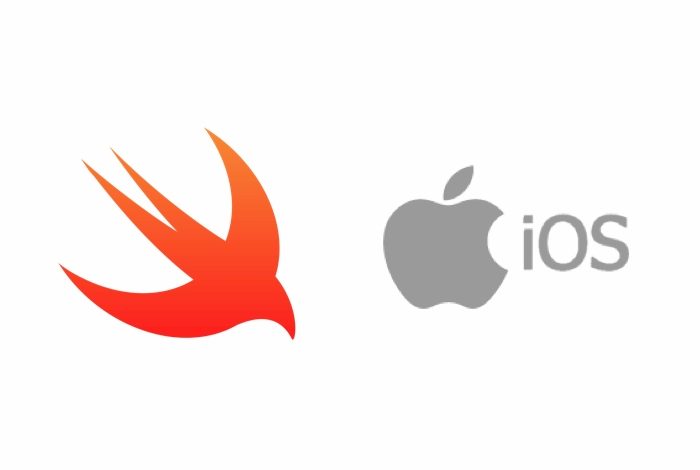How Swift is the Future of iOS App Development?

In the world of iOS app development, the Swift programming language is creating colossal waves. Since Tim Cook, Apple’s CEO, announced it in 2014, it has amassed a sizable market. Swift was dubbed “the next big programming language” by Tim Cook, and iOS developers all across the world will rely on it for the next 20 years.
Tim was right! Swift is not simply a success story, as Tim predicted, but it is also the programming language of the future for iOS app developers. Swift has already snatched up the lion’s share of the market since its launch. However, if you’re an iOS app developer or working for an iOS app development company in Kerala that still believes differently, we’ll persuade you otherwise.
We’ll go over everything you need to know about Swift in this post, as well as why Swift is the way of the future for iOS app developers.
Swift – An Introduction
Swift is a pro-developer programming language designed with beginners in mind. Since it’s simple to comprehend and code, Swift is often compared to English.
Aside from that, Swift is a natural and authoritative programming language that can be used to create apps for any Apple device. It was created and released to replace Objective-C, which had been around since 1984. Swift is very simple to maintain because the Xcode(IDE) detects code mistakes in real-time. Swift also has the benefit of being an open-source language, which is a big plus for iOS developers.
History of Swift
Before Apple officially announced Swift in 2014, a group of Apple developers, including Lattner, began working on it in 2010. Swift’s benefits, such as fewer crashes and succinct syntax, were immediately adopted by a slew of indie developers and entrepreneurs. Swift appears to be a natural progression of Objective-C. Swift was created to be a simple, powerful, and easy-to-understand programming language.
The Features that Make Swift a Popular Programming Language.
Swift is open-source
Swift is a free and open-source programming language. This means that anyone may use it to create an iOS app. It also allows developers to contribute to the evolution of the language. They can discuss language development, problem fixes, best work, and other topics.
Furthermore, there are several tools and instructional books available, making the programming language more accessible to new developers.
Experiment possibilities
Swift includes a playground mode that may be used to experiment with different application concepts. It simplifies things because it gives you a realistic view of how the app will end out, allowing you to decide whether to proceed or focus on a more practical project.
It’s critical to note that the programming language you’re using supports dynamic libraries. Developers link executable chunks of code to an application using these terms. Simply said, it allows present Swift programmes to communicate with newer versions of the language as the language improves in the future.
Easy maintenance
Objective-C will not evolve unless C evolves. Swift, on the other hand, is devoid of these dependencies. This is why it is simple to maintain. Furthermore, C developers must maintain two code files to save build time. The same method applies to Objective-C.
But how does Swift accomplish this? It unifies the Objective-C header (.h) and implementation (.m) files into a single code base) (.swift). While names and comments must be manually synchronised in Objective-C. As a result, Swift enables developers to write logic and high-quality code.
Ease of reading and writing
When compared to other languages, Swift is considerably easier to read and write because of its clearly clear syntax structure. Swift frameworks are clean and simple, allowing Swift-based products to run quickly and seamlessly. Swift is a simple and elegant programming language. It mimics ordinary English text, making it easier to interpret and saving time for developers.
Designed for safety
In Swift, there is no such thing as unsafe codes. The verbal’s may be used properly, and the Integers reused in Swift can be used as checkpoints for any form of overflow. Swift’s memory may be managed automatically. Swift has a benefit in the form of compiler mistakes. This means that the programming language will never have a zero option.
After it has been written, a faulty code can be quickly discovered. Errors in this programming language can be corrected quickly and easily. The amount of effort and money spent is relatively insignificant. The NIL variable in Swift can be used to find and fix any type of bug that may exist in the programming language.
Fast and powerful
Swift has always been designed to be quick, thanks to the high-performance LLVM compiler technology. To take advantage of contemporary hardware, Swift code is optimised into native code.
Regular updates
Swift’s most recent version, Swift 5.0, was recently published worldwide. Swift has a burgeoning development community. All iOS app developers are kept up to know on Swift’s latest features and developments. As a result, you have the option of purchasing advanced app solutions or modifying an existing iOS business app to address issues.
Now you can see why Swift is the future of iOS development, as well as the future of creating high-performing and secure apps. Furthermore, based on the advantages that Swift provides, it will undoubtedly rise to the top of the app development charts in the near future. It’s safe to expect that this language will cause significant changes in the way developers create iOS apps for businesses in the near future.
Whatsapp, Linkedin, Twitter, Kickstarter, and many other well-known organisations have already adopted the language. If you’re looking to create an iOS app with Swift, you can hire a top iOS App Development Company in Kerala.




